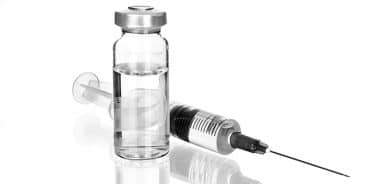Naproxen is a nonsteroidal anti-inflammatory drug used to treat inflammation and pain in joints and muscles. It is commonly used in the treatment of joint diseases such as rheumatoid arthritis, osteoarthritis, ankylosing spondylitis, and gout. It is also used in the treatment of musculoskeletal diseases such as menstrual cramps, mild and moderate toothache or headache, back pain and sprains. Common views side effects are indigestion, stomach disorders, headache, dizziness and edema. Naproxen is a medicine that should be taken under the supervision of a doctor.
Table of Contents
What is Naproxen sodium?
Naproxen sodium is a prescription drug included in NSAIDs (nonsteoridal anti-inflammatory drugs) used in the treatment of diseases such as pain and inflammation. Naproxen sodium is active ingredient. It is available as two different forms, each tablet of which contains 275 mg and 550 mg naproxen sodium. It is commonly used for joint diseases such as osteoarthritis, bursitis rheumatoid arthritis, ankylosing spondylitis, Juvenile arthritis and gout disease.
What is Naproxen used for?
Naproxen is a drug that is prescribed to treat pain, tenderness, edema, joint stiffness and inflammation of the joints and muscles following trauma or due to different causes. It can also be used for mild and moderate pain such as toothache and headache, pain during postoperative recovery period, and as antipyretic.
How does Naproxen work?
Prostaglandins are hormone-like substances that play an important role in the occurence of inflammation. They are formed in injured tissues and cause fever, edema, and pain. The active ingredient, naproxen sodium, helps lower prostaglandin levels in the body.
What is Naproxen prescribed for?
- Joint inflammation or joint cartilage damage that occurs after trauma and causes pain and loss of function
- Osteoarthritis (degradation of joint tissues),
- Rheumatoid arthritis (edema of joint tissues)
- Juvenile arthritis (a type of joint disorder in children)
- Ankylosing spondylitis (arthritis affecting the spine)
- Bursitis (inflammation of shoulder joint),
- Tendinitis (inflammation of the tissues that connect muscles to bones),
- Gout
- Menstrual cramps
- High fever
- Mild to moderate head, tooth, back and muscle aches
- Pain following surgical operations
How to use Naproxen?
Proper Use of Naproxen
- Take Naproxen with a glass of water without biting, chewing, and breaking it.
- Take it with or following meals to prevent stomach discomfort.
- Do not alter the dose without consulting your doctor or pharmacist.
- Store the medicine at room temperature away from moisture, light, and heat.
- Be sure to read usage instructions.
- If you forget to take any dose, you can take the medicine as soon as you remember; however, if there is not much time left for the next dose, skip the forgotten dose and do not double the dose.
- If you accidentally take it at higher dose level than prescriped, apply to a healthcare provider.
Naproxen dosage and Dose Adjustment
Dosage for Adults
For rheumatoid arthritis, osteoarthritis and ankylosing spondylitis
Recommended starting dose is 550 mg. Later, it can taken at a dose of 550 mg every 12 hours or 275 mg every 6-8 hours. Maximum daily dose on the 1st day of treatment is 1,375 mg. Subsequent daily doses should not exceed 1,100 mg.
For tendonitis, bursitis and menstrual cramps
The starting dose is 550 mg. If necessary, it can be maintained at a dose of 275 mg every 6 to 8 hours or 550 mg every 12 hours. Maximum daily dose on the 1st day of treatment is 1,375 mg. Subsequent daily doses should not exceed 1,100 mg.
For gout pain and inflammation
The starting dose is 825 mg. It is maintained at a dose of 275 mg every 8 hours until attacks are reduced.
It is lower in the elderly and individuals with liver, kidney, heart problems. Doctors will determine the right dose and duration of treatment for everybody.
Dosage for Children
Naproxen should be taken by those under the age of 16. However, in juvenile arthritis, a dose of 10 mg per kg every 12 hours can be administered to the children over 5 years old under the supervision of a doctor.
Dosage for The Elderly
In those over 65 years old, the body will metabolize the drug more slowly. Therefore, the treatment is administered starting at a lower dose level in this age group. Medicines at a higher amount may do harm to the patient.
Long term use of naproxen
Long term use of naproxen can only be determined by a doctor. Recommended maximum duration of use is 6 months. However, your doctor should determine the duration considering pros and cons.
Do not use this medicine at your own discretion as the risk of stomach disorders and hearth diseases may occur with long-term use.
Naproxen overdose
If you take a dose more than required, apply to the closest healthcare provider. Gastric emptying and activated charcoal should be administered. Gastric lavage may also be required. Renal and liver functions should be checked regularly. Overdose may cause severe stomachache, headache, dizziness, nausea and vomiting, stomach or intestinal bleeding, drowsiness, or seizures.
Forms and types of Naproxen
Medicines containing naproxen sodium (Generic naproxen)
- Aleve 220 mg film-coated tablet
- Anaprox 275 mg ve 550 mg film tablet
- Naproxen Sodium 275 mg ve 550 mg film tablet
- Naprosyn 500 mg suppository– 250 mg, 500 mg, 750 mg tablet
Who should not take Naproxen?
Do not take Naproxen in the following situations:
- Allergy to naproxen, asprin or different painkillers/medicines
- History of gastric ulcer, gastric or intestinal bleeding, gastric laceration/perforation
- Liver, renal or heart failure
- Before and after a bypass surgery
- Pregnancy and breastfeeding
Diseases for which Naproxen may be dangerous
Take Naproxen carefully when you have:
- Hypertension
- Risk of cardiovascular disease
- Crohn’s disease or ulcerative colitis
- Lupus disease
- Blood coagulation disorder
If you present with one of these diseases, do not take medicines containing naproxen or naproxen sodium at your own discretion. You doctor will prescribe appropriate painkiller that you need.
Naproxen drug interactions
Some medicines interact with Naproxen, thereby preventing the mechanism of action or increase side effects. If you take any of the following medicines, be sure to consult your doctor or pharmacist before taking a Naproxen:
- Antidepressants: Citalopram, Escitalopram, Fluoxetine, Fluvoxamine
- Blood Pressure Medicines: ACE inhibitors, angiotension receptor blockers, beta-blockers, diüretikler
- Heartburn and gastroprotecive medicines: Aluminium hydroxide, magnesium oxide, sucralfate
- Other nonsteroidal anti-inflammatory drugs (NSAIDs): Aspirin, ibuprofen, diclofenac etc.
- Immunosuppressants: Cyclosporine, Tacrolimus
- Quinolone-group antibiotics: Cipro, Ciproxin etc.
- Cholestiramine
- Lithium
- Methotrexate
- Warfarin
- HIV drug Zidavudine
- Probenecid
Do not drink alcohol with Naproxen. It may increase gastric bleeding.
Naproxen use during breastfeeding and pregnancy
Naproxen should not be used during pregnancy unless there is a requirement for use with a prescription. It should be avoided especially during pregnancies of >30 weeks. Alternative and safe painkillers should be used due to the risk of birth defects that may develop in the cardiovascular system.
Naproxen is not a painkiller suitable for use during breastfeeding as it passes into breast-milk. Instead, other painkillers containing paracetamol or ibuprofen may be preferred.
Does Naproxen cause to lose or gain weight?
Studies on the effects of painkillers on body metabolism is usually related to narcotic derivatives. Nonsteroidal painkillers, including naproxen, have no known effect on weight gain or loss.
Side effects of Naproxen
Common side effects
- Indigestion, heartburn, stomachache, nausea
- Headache, dizziness
- Itching, skin rashes
- Edema
- Tinnitus
These are not all of the side effects of medicines containing naproxen. If the above side effects do not disappear in a short period or a different side effect develops, you must inform your doctor and pharmacist.
Serious side effects
If you experience one of the following side effects, immediately consult your doctor or apply to the emergency of the closest hospital:
- Facial swelling or tightness in throat,
- Chest pain,
- Fatigue, shortness of breath,
- Speech disorders,
- Visual and balance disorder
- Stomachache,
- Jaundice in the skin or eye,
- Vomitting,
- Blood or black specks in the stool, swelling in hands and feet
In some cases, naproxen may lead to fetal gastrointestinal bleeding. The risk increases with the age, especially in the elderly.




